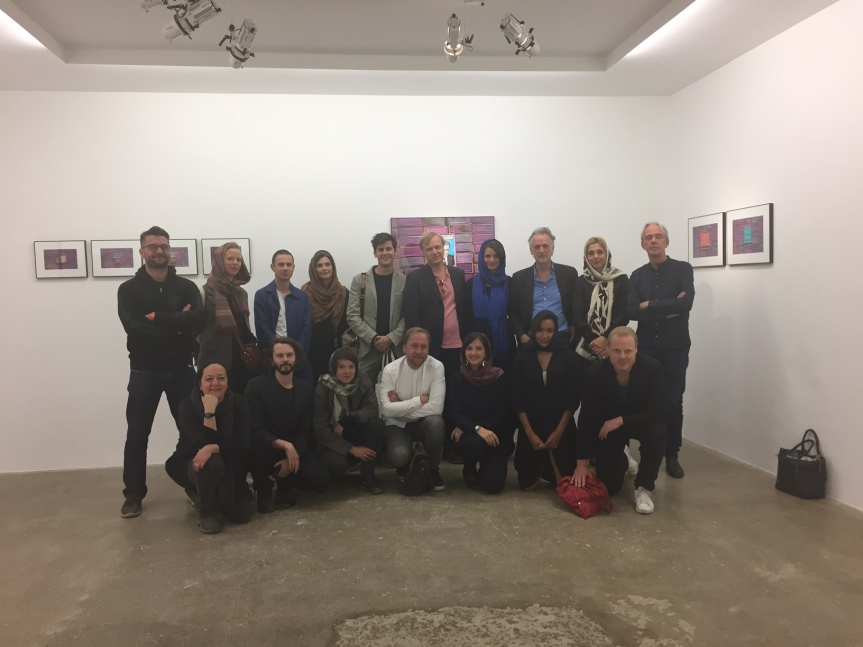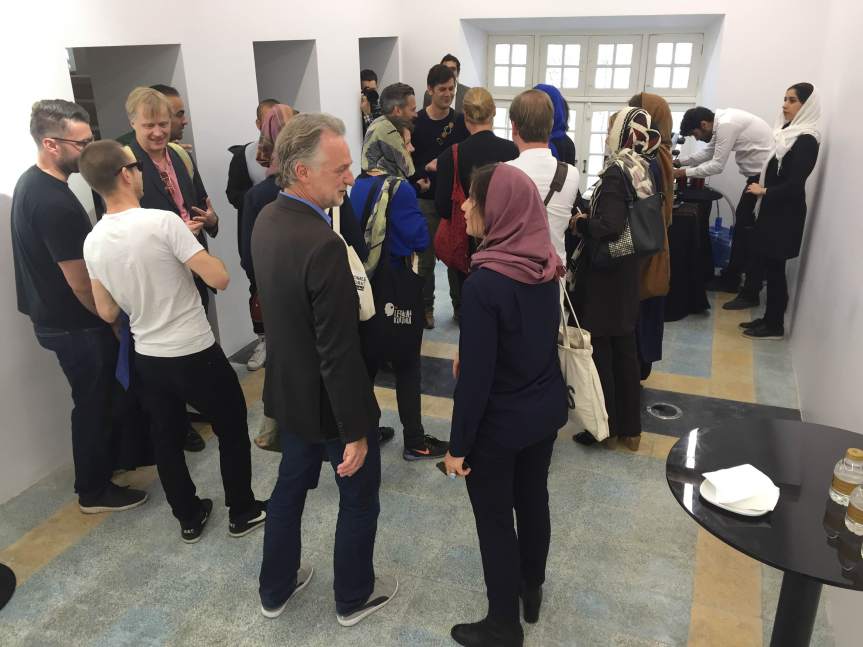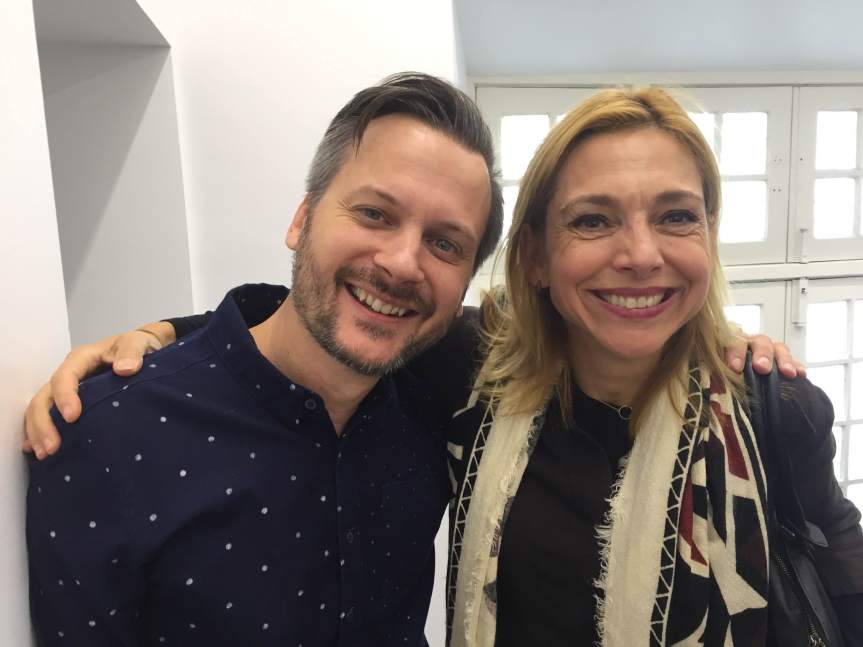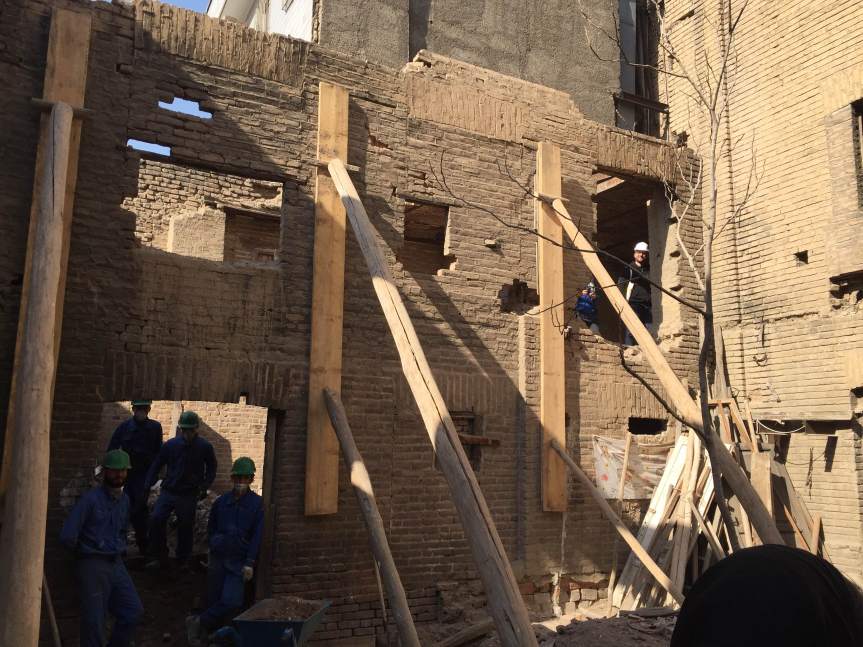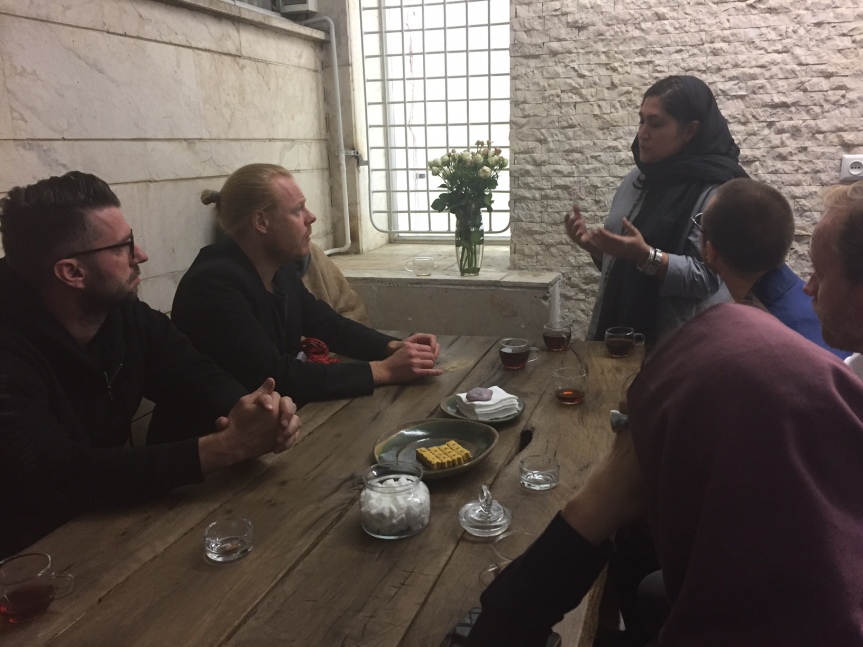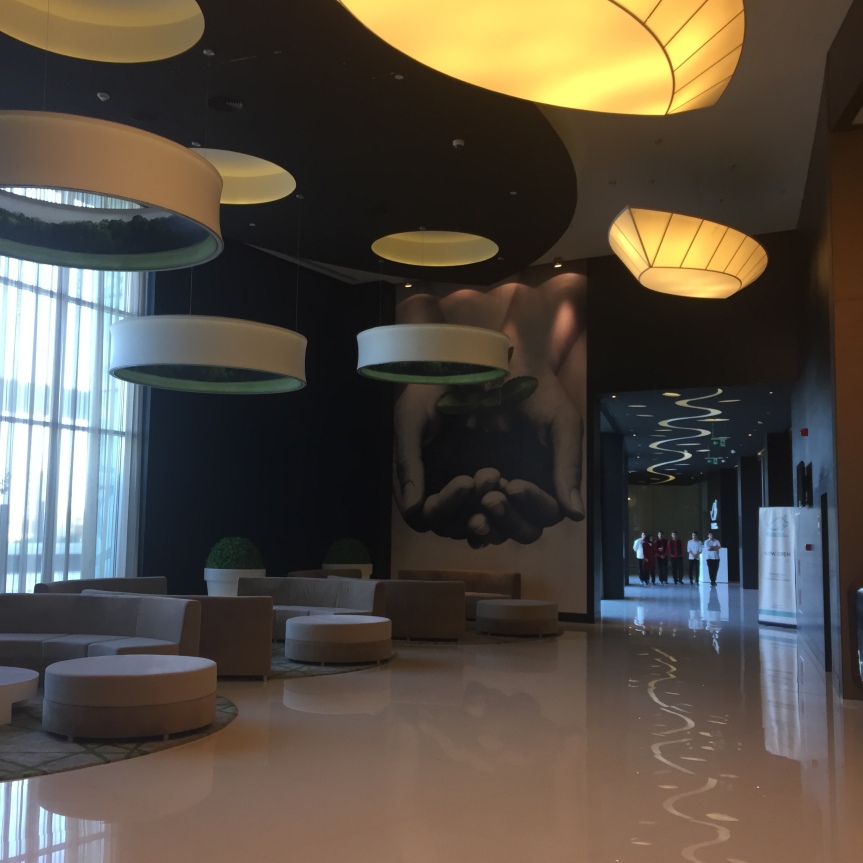
Day 13: You can sit here forever
Last day orientation trip 2016, an epilogue
By Zippora Elders
It’s Saturday morning 10 AM. Tehran. I worked late and now I almost miss breakfast. It takes me 15 minutes to dress. Headscarf, long vest. I run down to the restaurant. On my way I meet Jaap, James, Nathanja. They’re heading to the Film Museum. The rest of the group left this morning, to the Grand Bazaar. It’s the last day of our trip. I have breakfast alone. Bland electronic tunes in the Novotel. Decorations in purple, black and white. It’s been almost a month since I arrived in this warm country. I feel sentimental.
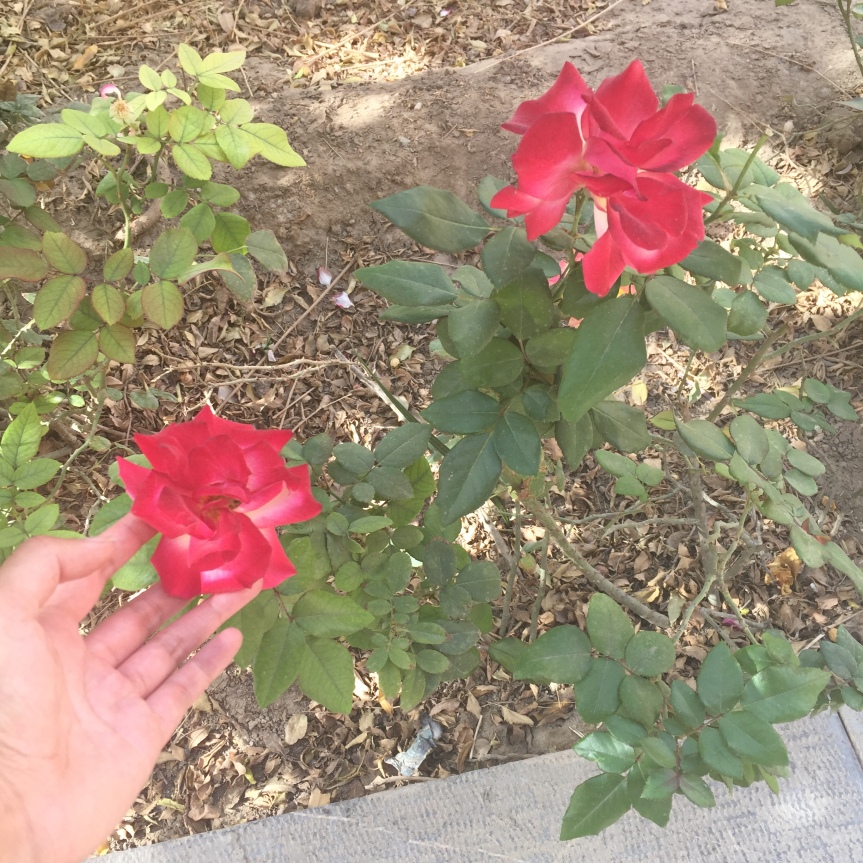
Only half of the breakfast buffet is left. The waiters apologize and ask what I want. I ask for goat cheese, water melon, cardamom tea and pistachio pastries. The waiter kindly asks if I’m from Thailand. Questions like these are asked to me at least twice a day. I say I’m from Amsterdam. He doesn’t believe me, my parents live in Asia? No they live in the East of the Netherlands. He concludes: “That’s why your English is so good. You’re smart. You’re from Europe.”
Europe…
The past weeks I travelled through Iran and Armenia with a group of selected artists, curators, directors from Belgium, Denmark, the Netherlands and Switzerland. It felt like time travel. Not because any of our visits felt like going back or forth in time, but because many different cultures, histories and languages were together at the same time. It was as if we were constantly moving around the edges of our respective worlds. Nazareth, Lilith, Jacob, Balthazar, Samuel, Nathanja, James, Zippora… A group of Biblical pilgrims roaming the desert.

With the Armenians we spoke French. Very old world, very old Europe. Going through their history it’s clear that the Armenians were and are everywhere, although they often weren’t allowed to be. Not so much is left of a realm that once was expansive, and there is a gap between the relative smallness of the cities we visited and the rich history of cultural exchange that we encountered. We saw amazing vintage photographs from Soviet times that reminded us of Moholy-Nagy and Outerbridge; we saw beautiful paintings of well to do ladies that travelled the world and made their own Beckmanss, Gauguins, Van Dongens; we watched an intriguing performance of a lady obsessively brushing her hairs, shot on 16mm film… Open and curious to everything that was presented to us, it was remarkable (and slightly annoying) how our European frame of reference lead us back to the canon of Western art a bit too often.

Sergei Parajanov’s museum in Yerevan was a treat. The film director’s imagination is unbelievable. So was his drive to create. With the culture and history of the region always in the back of his mind, a fine eye for tension and suspense and a very crafty hand, he created his own, intriguing world. The museum almost bursted of his unique visual language, sense of time and place: signs and symbols that we can only half understand – but feel the more. He worked always and everywhere, to the point that he was in Soviet prison, making figures in metal coins with his nails.
In Tehran we encountered an artist with the same prolific creativity. Ali Akhbar Sadeghi works with assemblage, animation and painting. In his works a sense of decoration and abstraction comes forth that one might call characteristically Iranian, yet at the same time he combines his skills and knowledge to make striking, humorous and slightly absurd works that are very much his own. Precisely the works that I found a bit kitschy at first linger on in my mind one week later. I vividly remember Paulien telling me that his works made her hopeful, and I felt the same kind of thrill. It’s a joy to stumble onto art that simply jumps over the conventions you know and then takes you by surprise: those artists that blow us away with their otherworldly perspective on life and whose imagination is so strong that their works somehow transcend the borders and categories we’re used to – to such an extent that a group of trained curators can’t easily put in words why they find an oeuvre exciting.
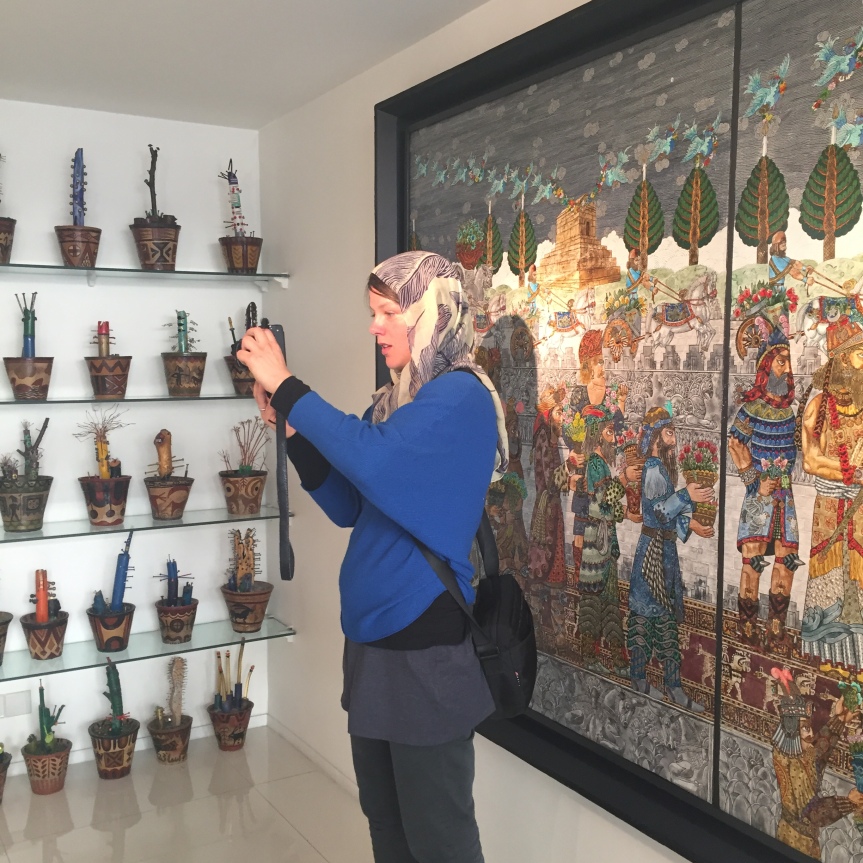
Painfully ironic, during a trip that is organized to introduce us to emerging networks of art in non-Western regions, one of the questions that bugged me most was: why is white male supremacy again on top of its game? It was in Yerevan where we followed the US elections. Watching Clinton’s defeat was depressing. In the morning I encountered Toke in front of the hotel with tears in his eyes, while Dirk, Eelco, Haco and Louise were sitting shocked in the lobby watching BBC.
That afternoon we all went to the Armenian Genocide Museum.
After this even more upsetting experience I stayed in my hotel room, despaired about the power of politics, the will to dominate, the history of terror, and wondered what Trump’s election will do for the regions we’re visiting. With (second) neighbors like Turkey, Iraq, Russia, Saudi Arabia, Syria, Afghanistan, Pakistan et cetera “a whole lot depends on Trump,” an Iranian told me when I asked about the political prognosis. That’s just way unsettling.
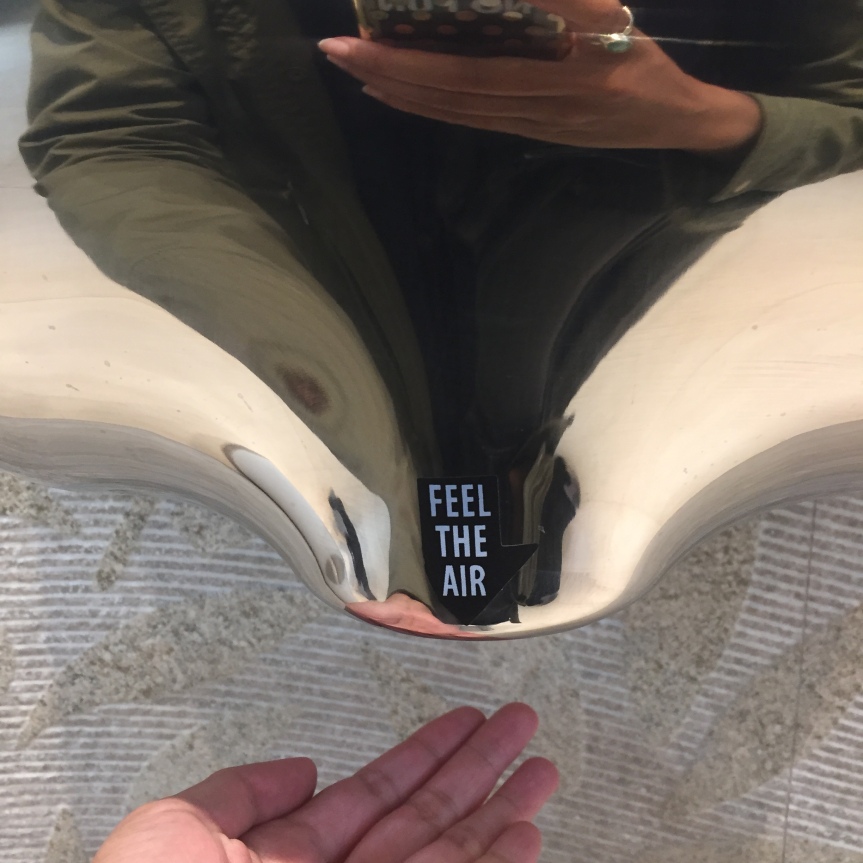
When you think Armenia and Iran, you might think: Christianity and Islam. But what’s really everywhere is: capital and consumption. Also everywhere: environmental issues and scarcity. So much smog in Tehran that I feel trapped. To the north: dystopian clusters of huge apartment buildings where no one lives. In the middle of Gyumri: a post-apocalyptic village of containers with hundreds of families that can’t afford new homes after the big earthquake. In Yerevan: one after another newly constructed alienating, postmodern building design to house big companies. Running through the centre of Isfahan: a gorgeous, far-reaching river without a drop of water.
On visit from these small countries in Europe, I feel neither smart nor significant, rather: oblivious and overprivileged. Previously mentioned persisting focus in the arts on the West feels paradoxical – understandable, but paradoxical. And awkward, to say the least; Europe’s legacy has been a nasty thing, too. The overwhelming hospitality of the Armenians and Iranians as opposed to our semi-closed borders: it’s a far-fetched comparison, but living in a rather frugal country, I feel this tension all the time. What keeps me upright (in relation to our professional field) is the hope for art that has the power to surprise, to reflect on the status quo, to open our eyes to new perspectives, to close the gaps – to finally create awareness and a sense of responsibility.
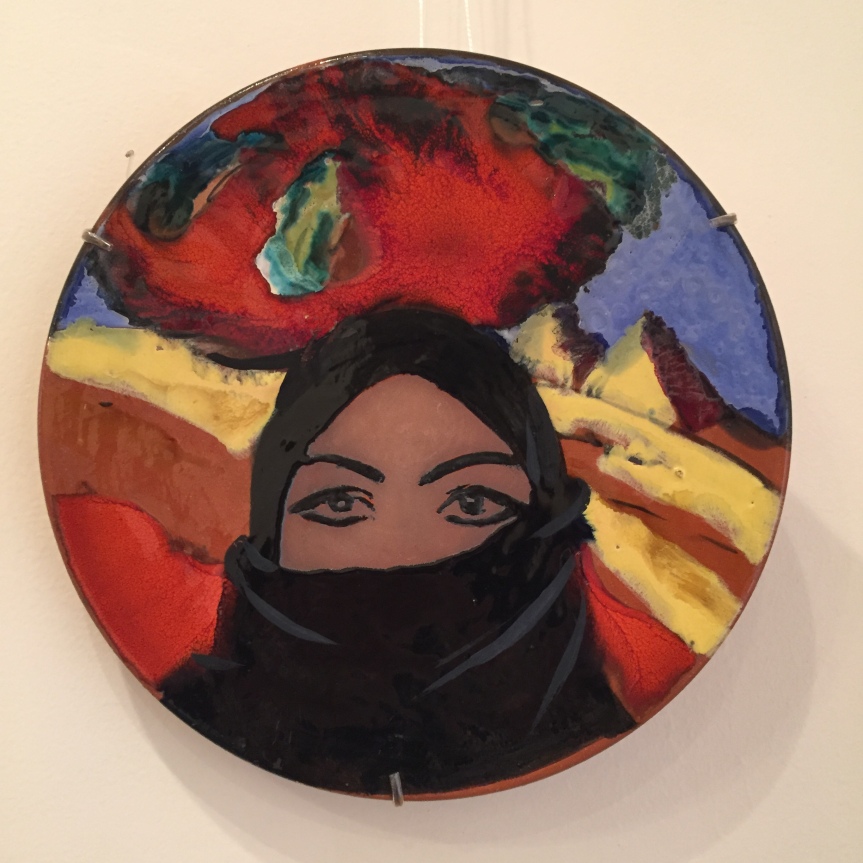
Back to breakfast in Tehran. By now the enormous room is empty. Only the waiter and me, the synthesizer tunes, pastries and laptop. Breakfast is over, but I need more time. I’m overwhelmed – by the news reaching and not reaching me from all over the world; by obscured histories and possible futures; by parallel experiences from colleagues in neighbouring European countries; by the feeling that I perhaps can’t change a thing, and at the same time that I should; by the uncomfortable realization that I, as opposed to billions of other people in the world, can travel almost anywhere I want (except, unfortunately, through time).
“Can I sit here?” I ask the waiter of the Novotel Tehran. “Yes, of course,” he smiles. “You can sit here forever.”
Thank you.
– ZE


